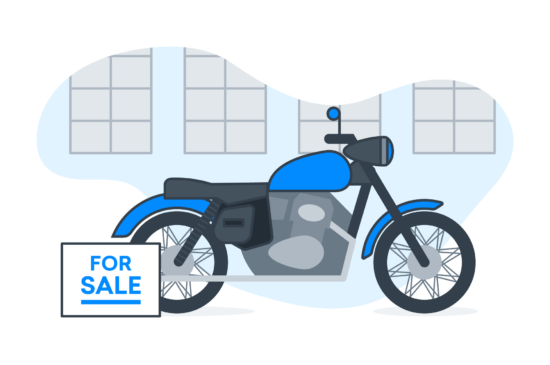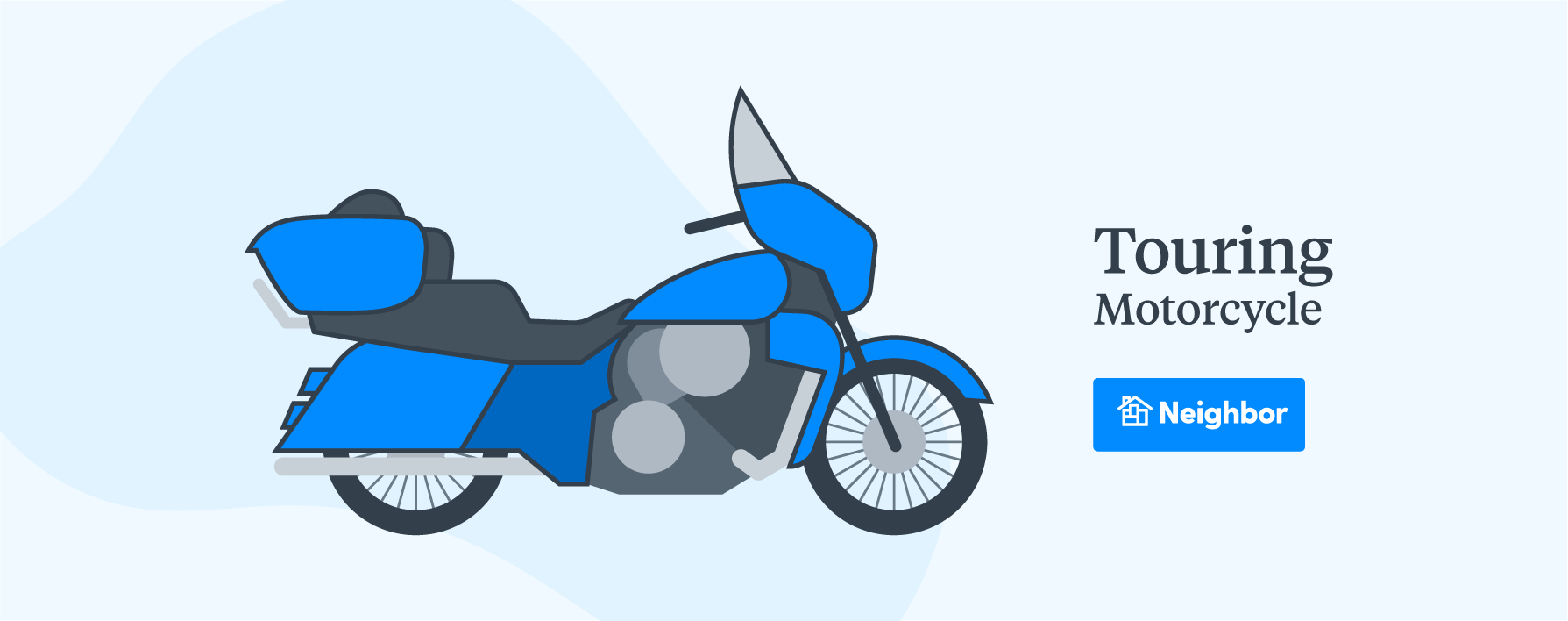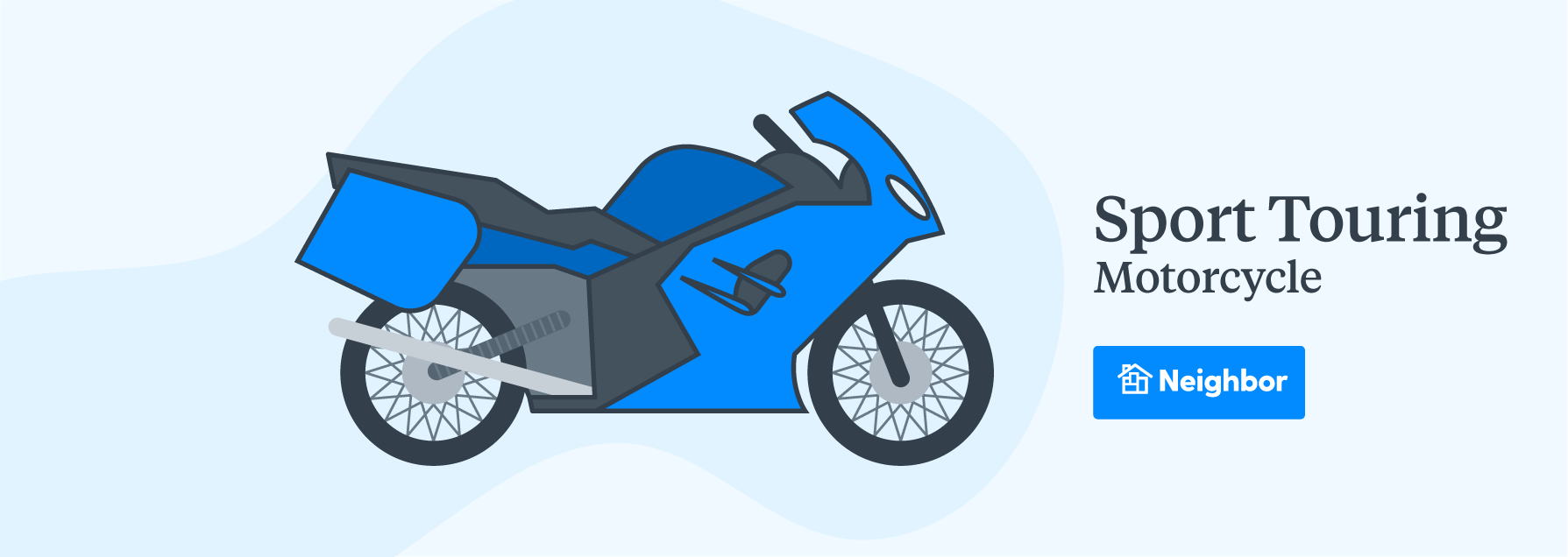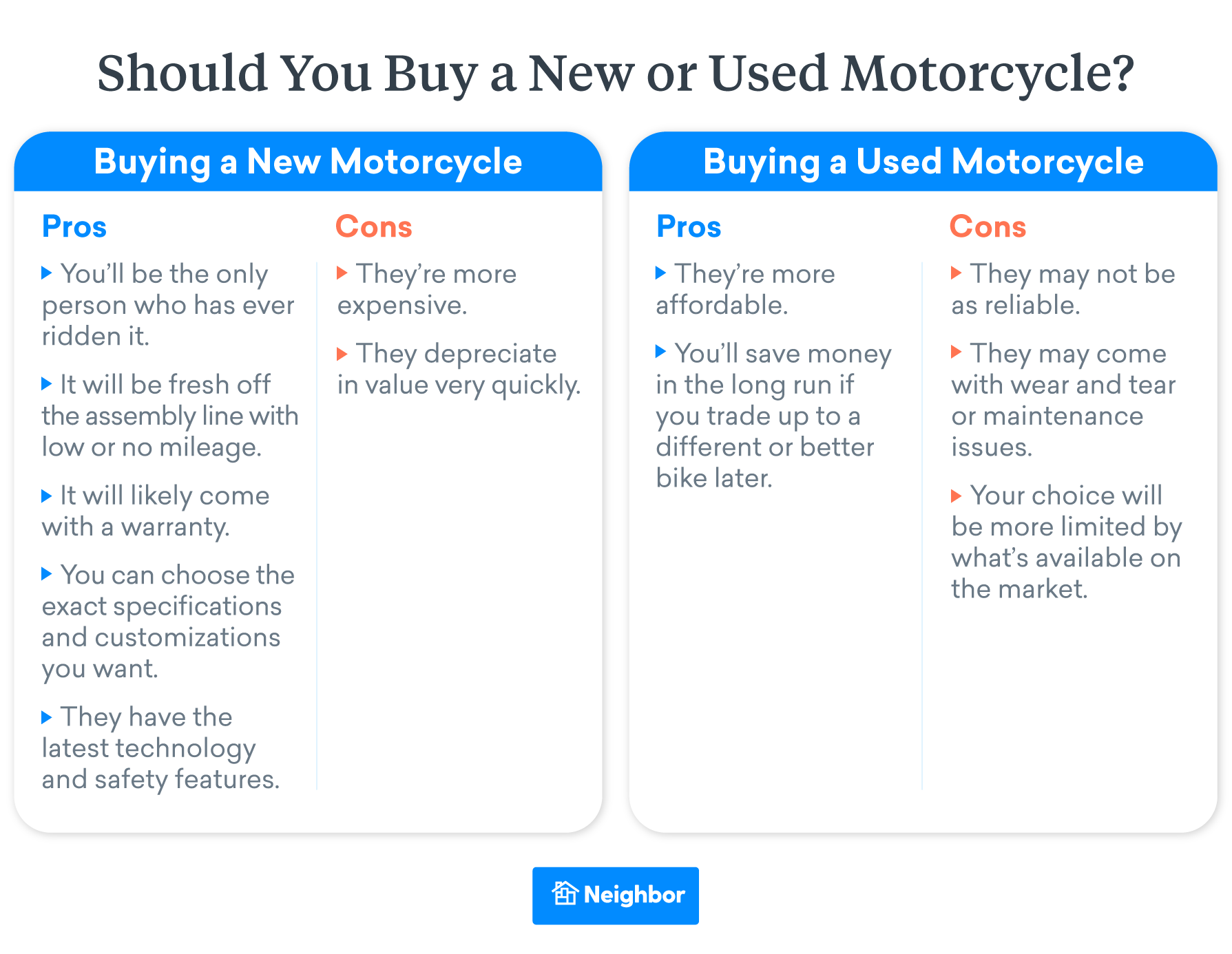So you’ve learned how to ride, passed a safety course, and are ready for buying a motorcycle. Whether you plan to just ride for fun on the weekends, or to make a fuel-efficient bike your new commuting vehicle, there’s a lot to consider before making this purchase.
For a first-time motorcycle buyer in particular, it will take time and careful consideration to decide the type of bike you want, your budget, where to buy, and so much more. But once you hit the road on the perfect bike, you’ll be glad you did your homework first.
This ultimate guide should prepare you for buying a motorcycle, covering everything you need to know before and during the buying process.
Jump to…
How Much Does it Cost Buy a Motorcycle
The Best Motorcycle Models and Brands
Looking for More Affordable Motorcycle Storage?
Considerations Before Buying a Motorcycle
Before you buy a motorcycle, there’s a lot to consider. Ask yourself these questions to determine whether buying your first bike is the right move — and if it is, what type of bike to look for and where to start your search.
Why are you buying a motorcycle?
Before anything else, think about why you’re looking at buying a motorcycle in the first place. Is it for you? Will you have a passenger riding with you? Do you plan to commute? Ride off-road? Take short rides on weekends? Take long-distance rides?
Asking yourself these questions now will help you hone in on exactly what you’re looking for in your new bike, which will help you answer other important questions, like what type of bike to consider, or where to buy your motorcycle.
What other things do you need for your motorcycle?
The things that you need for your bike will be largely informed by what you plan to do with it. If you plan to take long trips, you’ll need a comfy seat, storage, and a windshield. If you plan to commute, you’ll need a bike that’s reliable and fuel-efficient.
How often do you plan to ride your motorcycle?
If you plan to ride your motorcycle every day, your needs will be a little bit different than if you just plan to take it out for an occasional ride for fun. It’s perfectly OK to have a motorcycle you only use once in a while! But be realistic about this, as you’ll need to budget for safe storage for your motorcycle if you don’t plan to use it often.
What’s your riding ability?
An important factor to take into consideration when deciding what kind of motorcycle to buy is your own riding ability. If you’re a beginner, you’ll be more limited because you should only ever buy a bike that you can master. Buying a bike that you plan to grow into as you increase your skills will only result in you being intimidated by your motorcycle, at best. At worst, you could be seriously injured or killed if you lose control while trying to ride it.
What’s your body type?
Motorcycles come in a virtually endless array of shapes and sizes, which is good news, because so do human bodies. You’ll want to take your own size and shape into consideration when choosing a motorcycle. For example, a huge, heavy chopper might not be the right choice for someone who’s very short and slim. On the other hand, a small sport bike might be uncomfortable for someone who’s very tall or has a heavier build.
What’s your budget?
It’s possible to finance a motorcycle in some cases, but you’ll still want to think about the overall cost of the bike and how that fits into your budget. How much can you afford for a down payment? Can you afford the monthly payments? Does it financially make sense to take out a loan and pay interest on top of the price of the bike?
And when thinking about your budget, make sure to account for added expenses that come with owning a motorcycle. You’ll need to buy safety equipment, pay for maintenance and upkeep, and rent storage space if you don’t have a garage with room for your bike.
What type of motorcycle do you want?
In addition to shapes and sizes, motorcycles come in all kinds of types for different purposes. Choosing the right one can be overwhelming, so we’ll go into more detail about all the different types below.
Types of Motorcycles
There are many different types of motorcycles to choose from. Here, we’ll dive into seven common types:
- Standard motorcycles
- Cruisers
- Dual purpose motorcycles
- Sport bikes
- Touring motorcycles
- Sport touring motorcycles
- Electric motorcycles
Naked/standard motorcycles
This is the most common and conventional-looking type of street motorcycle with an upright riding position. In other words, when most people picture a motorcycle, a naked or standard bike is what they see.
These bikes can come with engine sizes ranging from 250 cc to 1500 cc. They’re available in a very wide range of sizes and price points from many different brands.
These are bikes that are well suited to city riding, commuting, taking medium distance trips, and riding with passengers.
Cruisers
Cruisers are distinct because of their more relaxed riding position and the way many riders customize them to fit their own personal style. They’re typically lower to the ground and come in a variety of sizes and engine types, which means they can be small and fuel-efficient, or large and stylish depending on what the rider wants.
These bikes are well suited to city riding, commuting, riding with passengers, and short trips, like day trips.
Dual purpose motorcycles
Dual purpose bikes combine features from street legal motorcycles and dirt bikes that are designed for more adventurous, off-road riding. That means that these bikes are completely street legal, but also have the build and high clearance necessary for off-road riding, as well.
Dual purpose bikes come in a wide array of sizes, engine types, and horsepower. They’re a good fit for riders who want to do city riding or commuting, but also want to do more adventurous riding or need to navigate dirt or gravel roads.
Sport bikes
Sport bikes are modeled after racing motorcycles, which means they’re sleek and lightweight, with the rider in a crouched-forward position. These are designed to be fast and powerful, and require expert riding skills. They also come with higher insurance rates than many other kinds of motorcycles.
Sport bikes are well suited to highway riding and short tours. They’re not ideal for cities or commuting because they can run very hot while sitting in traffic.
Touring motorcycles
Touring motorcycles are made for long-distance trips. They’re designed to be comfortable for one or two people to spend all day riding, and are generally fairly large and powerful.
These bikes are well suited for long-distance trips and riding with a passenger, but also make great commuting bikes because of how comfortable they are to ride.
Sport touring motorcycles
For riders who want a motorcycle comfortable enough for long distances, but with style, speed, and power, there are sport touring bikes. These combine features that make long-distance riding more comfortable with stylish design and powerful engines.
These bikes are well suited for just about any kind of riding, but are particularly great for riders who want a high-performance bike on all kinds of different roads.
Electric motorcycles
In recent years, electric motorcycles have become a more and more popular choice among riders who want city-friendly bikes. Electric motorcycles typically have a battery range of about 50 miles, and can be recharged using a household current. These aren’t the fastest or most powerful motorcycles, but they’re incredibly cost-efficient.
These bikes are well suited for city riders and commuters who don’t need to travel long distances.
Buying the right motorcycle for your riding skills
When choosing the right type of motorcycle for you, the most important thing to consider is your riding skill — particularly if you have limited experience.
It’s all too common for newer riders to choose a bike that they think they’ll “grow into,” but that’s actually incredibly dangerous, because they don’t currently have enough experience for the bike they’ve chosen. Whatever type of motorcycle you choose, make sure it’s a size and horsepower that you can master. If you need a more powerful bike later, it’s easy to trade up.
Where to Buy a Motorcycle
There are a lot of different places you can buy a motorcycle, either new or used.
For a new bike, you can shop directly from the manufacturer, or go to a dealer.
For a used bike, you can shop at dealerships, or look for an opportunity to purchase the bike you want directly from its previous owner. In this case, you can watch classifieds publications and online marketplaces where people post used motorcycles for sale.
Another option that many people may not consider is a motorcycle show. These happen all over the U.S. and give riders an opportunity to see a wide variety of types of bikes from different manufacturers and sellers. This is a great choice if you don’t know exactly what you want and would like to compare options. Shows can also be great spots for getting a good deal on a bike.
Buying a New vs. Used Motorcycle
There are pros and cons to both new and used motorcycles, and ultimately, this decision will come down to personal choice and what’s most important to you.
If you buy a new bike, you’ll be the only person who has ridden it, and it will have low or no miles. It will likely come with a warranty. You’ll be able to choose any specifications or customizations you want, and you’ll have the latest technology and safety features available. The downside, of course, is that a new bike can be very expensive, and its value depreciates very quickly.
If you buy a used bike, you’ll likely save a significant amount of money on the cost of the motorcycle itself, as well as saving in the long run if you ever trade up for a different bike, since a used one won’t depreciate as much or as quickly. The downsides are that your choices will be more limited by what’s available in the market, and a used bike may not be as reliable. You can mitigate this risk by looking for a used motorcycle that isn’t very old, or has low miles (under 20,000 miles is a good benchmark).
Benefits to buying a used motorcycle:
For beginner riders, many experts recommend looking for a used motorcycle for a few different reasons:
- If it costs less, you don’t have to worry as much about damaging it as you learn to ride.
- As a new rider, you’ll spend your first few years developing your skills and learning what you like and want in a motorcycle. You might want to put off investing in a brand new bike until you know exactly what your dream, lifelong ride is going to be.
How Much Does it Cost to Buy a Motorcycle?
Motorcycles vary a lot in cost. It depends on what kind of bike you’re getting, whether it’s new or used, what customization or upgrades you want to add, and more. For a standard/naked motorcycle without a lot of bells and whistles, prices might start around $3000. For a more powerful touring or cruising bike, prices can easily reach tens of thousands, especially with customization.
Financing a motorcycle
Almost all motorcycle dealerships will offer some kind of financing. You might also be able to secure a loan through your own bank, especially if you have good credit. Be wary of third-party lenders who offer motorcycle financing — they likely charge higher interest rates.
If you’re considering financing, think carefully about all the factors involved. Paying interest on a motorcycle loan can add significantly more to the already high cost of a new bike. If you can’t afford to pay for your motorcycle outright, it might make more financial sense to look for a used bike, which will be much cheaper.
Costs of owning a motorcycle
In addition to the bike itself, there are many other costs that come with owning a motorcycle, including:
- Your motorcycle operator’s licence
- Registering your motorcycle
- Motorcycle insurance
- Safety equipment
- If unable to store at home, motorcycle storage costs
- Ongoing maintenance for your motorcycle, including winterization and dewinterization if you live somewhere with harsh winters.
Motorcycle maintenance costs
Motorcycles, like any other vehicle, need ongoing maintenance to stay in good shape. Luckily, motorcycles have small, open engines that are often less complicated than the mechanical systems of a car or other vehicle. With some education and practice, you can save costs by learning to do some motorcycle upkeep and repairs yourself.
The Best Motorcycle Models and Brands
According to CarLogos, these are the top motorcycle brands in the world. If you’re looking for a reputable, reliable brand to buy your motorcycle from, this list is likely a good starting point.
- KTM
- Aprilia
- Suzuki
- Harley-Davidson
- BMW
- Triumph
- Kawasaki
- Ducati
- Honda
- Yamaha
Looking for More Affordable Motorcycle Storage?
Motorcycles come with a lot of ongoing costs. Storage doesn’t have to be one of them.
With Neighbor, you can find space to store your motorcycle or other vehicle for, on average, 50% less than what traditional self storage costs. Plus, it’s safe, close to where you are, and helps bring communities together.















